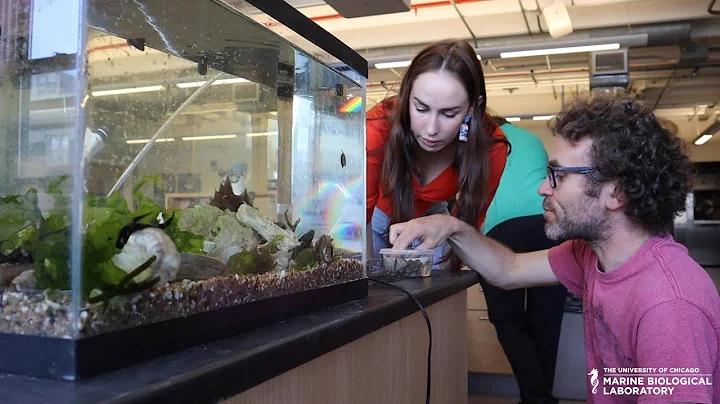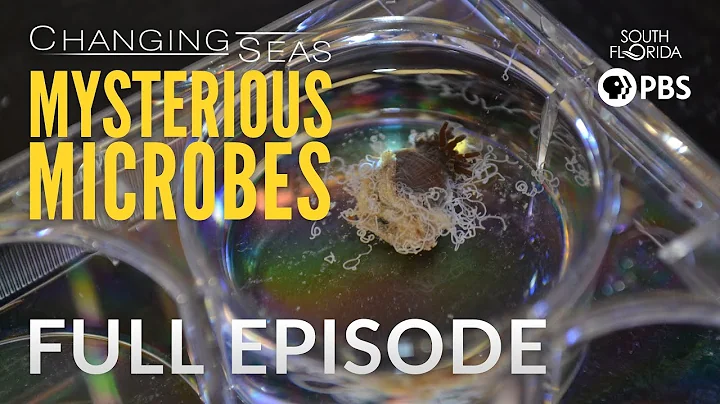
Recently, the scientific community announced a surprising discovery. Marine biologists from the Complex Systems Research Laboratory in Menlo Park, California, announced a 2cm long bacterium and named it T. magnifica. .
T. magnifica is filamentous and visible to the naked eye, but it consists of only one cell. The researchers who discovered it could not believe it at first, because many microorganisms (such as slime mold and cyanobacteria ) will form visible to the naked eye. Filaments, and those filaments are composed of many stacks of cells.

Picture: T. magnifica
However, it took the researchers 5 years, using various microscopes and staining methods, to finally confirm that T. magnifica is indeed a bacteria with only one cell.
T. This ruler of magnifica is definitely a giant in the bacterial world. It is 5,000 times larger than ordinary bacteria. In the words of biologists, ordinary bacteria are like a person standing in front of Mount Everest ; In the words of netizens, this is not a "bacteria", it is clearly a "bacteria".
In fact, most bacteria are so small that most microbial researchers don't even think that bacteria should grow very big. T. magnifica is at least 10 times larger than the largest bacteria previously predicted.
Then the question arises, why can T. magnifica grow so big, while most other bacteria can only grow very small?

Figure: The difference between prokaryotic and eukaryotic cells
Simple Prokaryotic cells
For a long time, living things have been classified into two major categories, one is called Eukaryotes From fungi to most forms of multicellular All biological belongs to this category, including us humans, of course.
The other category is the relatively simple prokaryotes , including all bacteria, as well as archaea and other single-celled organisms are classified into this category.
There is an exception here, and that is viruses. Viruses do not belong to either of these two categories, so there is a lot of controversy over whether viruses are biological organisms.

Icosahedral adenovirus, Source: GrahamColm
The biggest difference between eukaryotes and prokaryotes is whether their cells have nuclei, and other organelles. The nucleus and organelles will firmly bind some important components of the cell. The ground is locked inside, such as DNA.
Obviously, relatively simple prokaryotic cells do not have complex structures such as nuclei. At the same time, because they are very simple, their genomes are also very limited, sometimes even only one DNA ring. On average, bacterial genomes are only about 4 million bases and about 3,900 genes.
This simple cell structure and a small amount of genome prevent prokaryotic cells from carrying out complex cell differentiation , so prokaryotic cells cannot form multicellular organisms at all..
This is why all prokaryotes, including bacteria, are single-celled organisms.

Picture: Physarum polycephalum that sticks together to survive. In fact, some bacteria will adopt a survival mode called biofilm. They will secrete some polysaccharides as adhesives to stick to each other. Produce a "quorum sensing" phenomenon like having intelligence to enhance survivability.
But they do not have complex cell differentiation like true multicellular organisms (eukaryotes) - various cells can perform different functions, so this model cannot be called multicellular organisms.

Halothiobacillus neapolitanum, picture source: Tsai Y
Make simplicity easier
We usually think that cells should be small, but in fact some cells can be very large. For example, the fertilized eggs of some birds are also cells visible to the naked eye, just as Prokaryotes are single cells, and bacteria really have a hard time getting bigger.
This is because these simple prokaryotic cells do not have complex organelles, and even DNA floats freely within the cells, which results in the space for their life processes being restricted.
If the prokaryotic cell is very large, it will take longer for the waste generated during the cell's life activities to be discharged from the cell. Many of these wastes are toxic to life.

Since the important things of prokaryotic cells are exposed, if the waste cannot be quickly discharged from the cells, they may themselves be poisoned to death.
Based on this simple process, it can be inferred that bacterial cells should not be too large.
But in fact, bacteria are very small and there are some other evolutionary factors, that is, when they take in nutrients, if the cells are too large, it is actually very disadvantageous for them, because then nutrients need to flow more quickly in the cells. long time.
In other words, if the bacterial cell is very large, its feeding efficiency will be very low, which will consume a lot of energy, which is definitely detrimental to the organism.

Therefore, the smaller the size of bacteria, the more energy efficient and stable they are, and they can transport their nutrients into and metabolic waste out of the cell with less energy investment.
Of course, the energy saved allows them to reproduce more. Natural selection can easily find the optimal survival plan, so from an evolutionary perspective, bacteria should not be too big.
So, why can the newly discovered bacteria-T. magnifica grow so big?

2cm bacteria maintain cell stability?
In fact, no one knows why T. magnifica can grow so big, but there are some reasons why it will not be poisoned or starve to death even at such a large size.
In 1999, researchers discovered dragon fruit giant sulfur-eating bacteria off the coast of Namibia. At that time, researchers found that the cell contents of this giant bacterium were contained in a huge, filled with water and nitrates The sacs squeeze into the cell wall at , and the parts where they perform life activities exist along the edge of the cell. This is the reason why they are large and can survive.
T. magnifica is similar to the giant sulfur-eating bacterium, which also has huge, water-containing sacs—about 73 percent of its total volume.

In fact, because both bacteria share this similar genetic profile, they are placed in the same genus, Thielomonads , and T. magnifica, like their close relatives, the giant thiophilic bacteria. , their cell contents are also squeezed to the cell edge by this sac.
However, compared to other bacteria of the genus Thiolobia, T. magnifica also has a capsule - a structure similar to the function of a cell nucleus, in which all the DNA is wrapped.
In fact, T. magnific is a bit like a cell structure between prokaryotic cells and eukaryotic cells , so the researchers of this study bluntly said: It is time to rethink our definitions of eukaryotes and prokaryotes.

After having the structure to protect DNA, T. magnific naturally has more genomes. After sequencing, researchers found that T. magnific has 11 million bases , including about 11,000 clearly identifiable ones. genes, nearly three times that of ordinary bacteria. When
genes become more numerous, they are naturally qualified to become more complex, which is one of the reasons why they can become larger.

Finally
In fact, after the cells of single-cell organisms become larger, they also have obvious survival advantages, because this increases their surface area and can absorb nutrients better and more. At the same time, due to the increase in body size, It is less likely to be eaten by other microorganisms.
Of course, the evolutionary purpose of T. magnific growing so large still needs further study, but in any case, this is a miracle of the "bacterial world" (qipa).





















